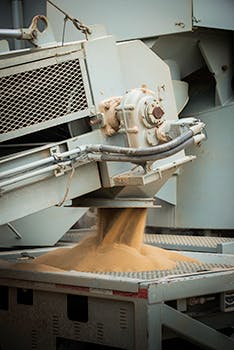Proppant suppliers in the Bakken and other unconventional plays face deteriorating margins, cash flows, and liquidity given a declining onshore US rig count, Moody's Investors Service said in an April report.
"A significant number of drilled but incomplete oil wells in North America will remain unfinished while producers wait for completion costs to come down or oil prices to recover," said Karen Nickerson, Moody's vice-president and senior credit officer.
She noted the proppant market could rebound quickly when commodity prices recover. She also believes an existing backlog of uncompleted wells could help proppant demand recover more quickly than in past cycles even without a corresponding increase in rig count.
Yet for now, Moody's negative outlook for operators and service companies foreshadow a weakness for proppant companies, she said. Moody's base-case price assumption calls for light, sweet crude prices to average $50/bbl on the New York Mercantile Exchange during 2015 and $60/bbl during 2016.
Separately, J. Marshall Adkins, services analyst with Raymond James & Associates, noted that US Silica provided commentary on the market during its first-quarter earnings call on Apr. 29.
"The company gave some positive commentary on the broader sand market compared with what we had previously heard from pressure pumpers," Adkins said.
Silica executives believe that with a 60% rig-count bottom, the demand for fracturing sand could be down about 25-30% year-on-year, Adkins said, adding Silica reported a shift toward fewer in-basin deliveries with a larger portion of sales coming from larger customers who prefer to pick up the sand.
Adkins said sand demand for Silica fell the hardest during the final weeks of March and going into April.
"The read-throughs to the broader frac-sand market were positive compared with prior expectations, particularly regarding better than expected changes in sand pricing at the mine," Adkins said.
Contracts getting renegotiated
Moody's Nickerson said, "We expect oil and natural gas prices to remain weak and volatile…. Proppant companies are responding by collaborating with customers to reduce or eliminate inefficiencies in the supply chain in order to reduce all-in costs at the well sites."
This includes reduced proppant prices, she said, adding she expects price pressures will increase as the year progresses. She expects proppant suppliers will renegotiate contracts seeking greater volume or longer terms to counterbalance any price compromises.
"The change in proppant volume for 2015 remains uncertain in light of new sand-intensive drilling techniques, but it is clear volume will decline," Nickerson said. "At this time, we expect some of the additional sand capacity that was slated to come online in 2015 will be delayed."
Exploration and production companies, both US and Canadian, have announced budget cuts averaging 41% for 2015 compared with 2014 budgets, Moody's analysis showed. Exploration and production companies could cut spending even more later this year if oil prices continue downward, Moody's said.
Nickerson noted the number of drilled but uncompleted wells is rising.
"That is expected to continue until completion services costs come down or oil and natural gas prices improve," she said. "With a large number of North American E&P companies postponing well completions, the demand and pricing for hydraulic fracturing and pressure-pumping will drop sharply in the first half of 2015."



